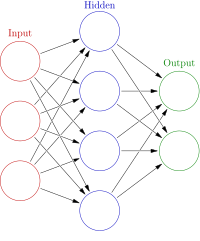
Photo from wikipedia
The Industrial Internet of Things (IIoT) brings together many sensors, machines, industrial applications, databases, services, and people at work. The IIoT is improving our lives in several ways including smarter… Click to show full abstract
The Industrial Internet of Things (IIoT) brings together many sensors, machines, industrial applications, databases, services, and people at work. The IIoT is improving our lives in several ways including smarter cities, agriculture, and e-healthcare, etc. Although the IIoT shares several characteristics with the consumer IoT, different cybersecurity mechanisms are adopted for both networks. Unlike consumer IoT solutions that are used by an individual user for a single purpose, IIoT solutions tend to be integrated into larger operational systems. As a result, IIoT security solutions require additional planning and awareness to ensure the security and privacy of the system. In this paper, different cybersecurity attacks such as denial of service (DoS), malicious operation, malicious control, data type probing, spying, scan, and wrong setup are predicted by applying machine learning techniques. To predict the aforementioned attacks, a novel lightweight random neural network (RaNN)-based prediction model has been proposed in this article. To investigate the performance of the RaNN-based prediction model, several evaluation parameters such as accuracy, precision, recall, and F1 score were calculated and compared with the traditional artificial neural network (ANN), support vector machine (SVM) and decision tree (DT). The evaluation results show that the proposed RaNN model achieves an accuracy of 99.20% for a learning rate of 0.01, with a prediction time of 34.51 milliseconds. Other performance parameters such as the precision, recall, and F1 score were 99.11%, 99.13%, and 99.20%, respectively. The proposed scheme improves the attack detection accuracy by an average of 5.65% compared to that of state-of-the-art machine learning schemes for IoT security.
Journal Title: IEEE Access
Year Published: 2020
Link to full text (if available)
Share on Social Media: Sign Up to like & get
recommendations!